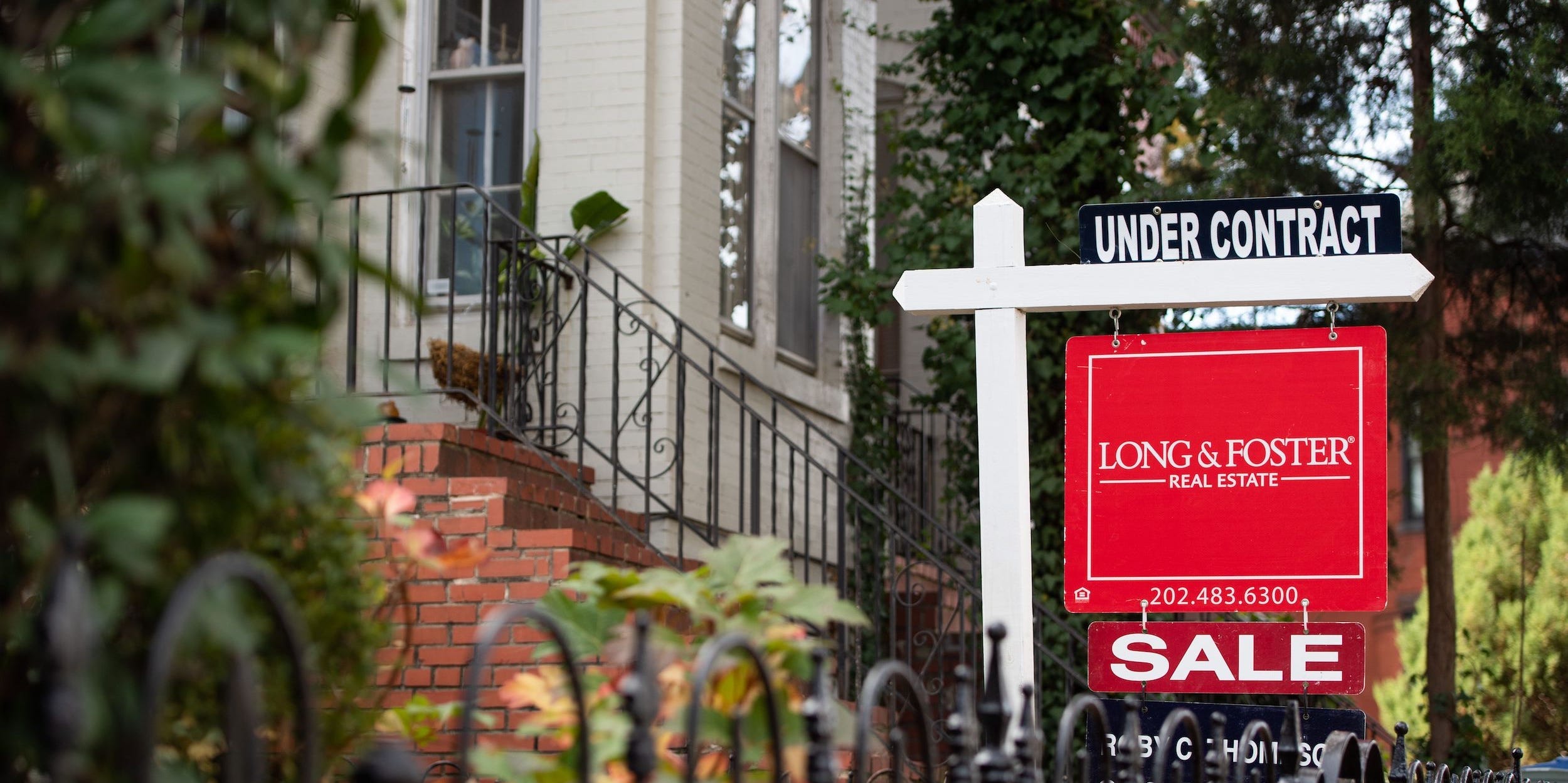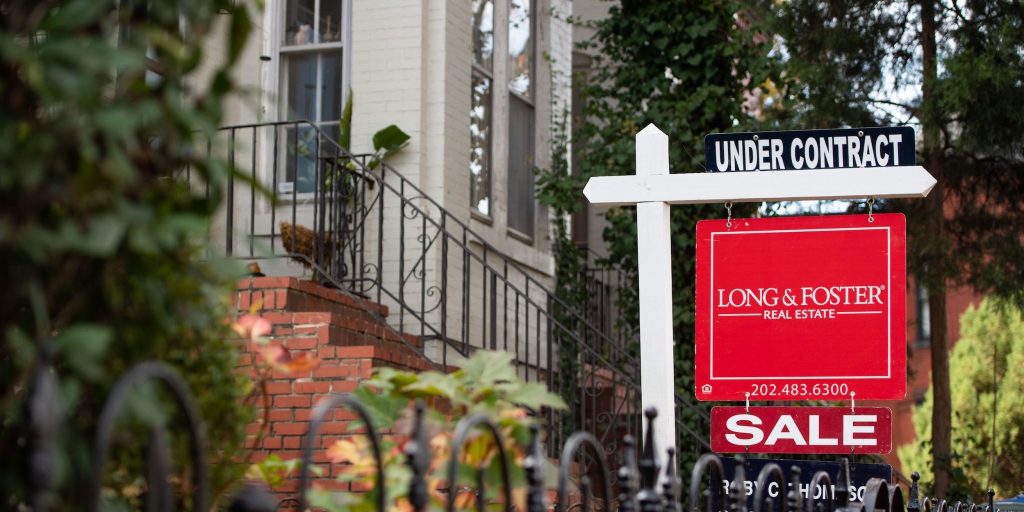
Saul Loeb/AFP/Getty Images
- The housing market rally has largely benefitted wealthy homeowners as prices soar at record pace.
- Sales of homes priced over $1 million are up 245% year-over-year. Homes worth under $100,000 are down 11%.
- The gap is just one of several K-shaped trends in the uneven economic recovery.
- See more stories on Insider's business page.
Like many other aspects of the US recovery, the housing market's boom has been anything but even.
The market rally started as a broad upswing. After home sales tumbled at the start of the pandemic, surging demand and low mortgage rates spurred a nationwide buying spree. But as the boom charged forward, a K-shaped split emerged in which type of homes were rapidly gaining value and which were being left by the wayside.
The term "K-shaped recovery" has come to exemplify uneven elements of the US's economic rebound. Wealthier Americans generally fared better through lockdowns as they switched to remote work and leaned on savings. Low-income Americans and minorities, however, have longer recoveries ahead of them after being disproportionately hit by the COVID-19 recession.
Existing home sales data published Tuesday reveals just how wide that gap has become in housing. Sales of homes worth at least $1 million have surged 245% year-over-year, according to the National Association of Realtors. That's a larger jump than any other price category.
Conversely, sales of homes worth less than $100,000 have plummeted 11% from May 2020 and sales of homes worth between $100,000 and $250,000 dipped 1.7% through the year.
The disparities point to growing inequity in the US housing market. Homes worth up to $250,000 accounted for about 30% of sales in May, while those worth more than $1 million only represented 6.3% of sales.
The sales gap widened even further in the spring. As dire inventory shortage drove home-price inflation to its fastest rate since the mid-2000s market bubble with demand handily outstripping supply, sales for the most expensive homes soared even higher, and sales of homes costing less than $100,000 dropped lower.
Taken together, the country's wealthiest homeowners benefitted most from the price rally, and those living in the country's least-expensive homes have largely missed the market upswing.
Other data suggest the trend will continue through the summer. Housing starts have wavered in recent months as expensive lumber costs and lot shortages cut into homebuilding. And sales of new homes slid again in May, suggesting contractors are far from meeting massive demand with new supply.
New homes that have gone to market are also more skewed to wealthier buyers than a year ago. Where the majority of new homes in May 2020 were priced between $200,000 and $299,000, the majority now cost between $300,000 and $399,000, according to the Census Bureau.
The shift has little to do with more expensive units hitting the market, Ali Wolf, chief economist at housing platform Zonda, wrote in a Wednesday tweet. Instead, the change reflects price growth over the last year. Roughly 95% of contractors raised prices from April to May, and most of the increases averaged $10,000 or more, Wolf said.
Addressing the shortage will take a massive effort, according to NAR's estimates. Decades of underbuilding and losses of existing homes left the US with a supply shortage of about 6.8 million houses, according to a report published earlier this month.
Builders will need to accelerate construction to 2 million units per year should they aim to fill the hole over the next decade, NAR added. That would be a sizeable jump from the May pace of 1.57 million homes per year.
"There is a strong desire for homeownership across this country, but the lack of supply is preventing too many Americans from achieving that dream," Lawrence Yun, chief economist at NAR, said in the report.

